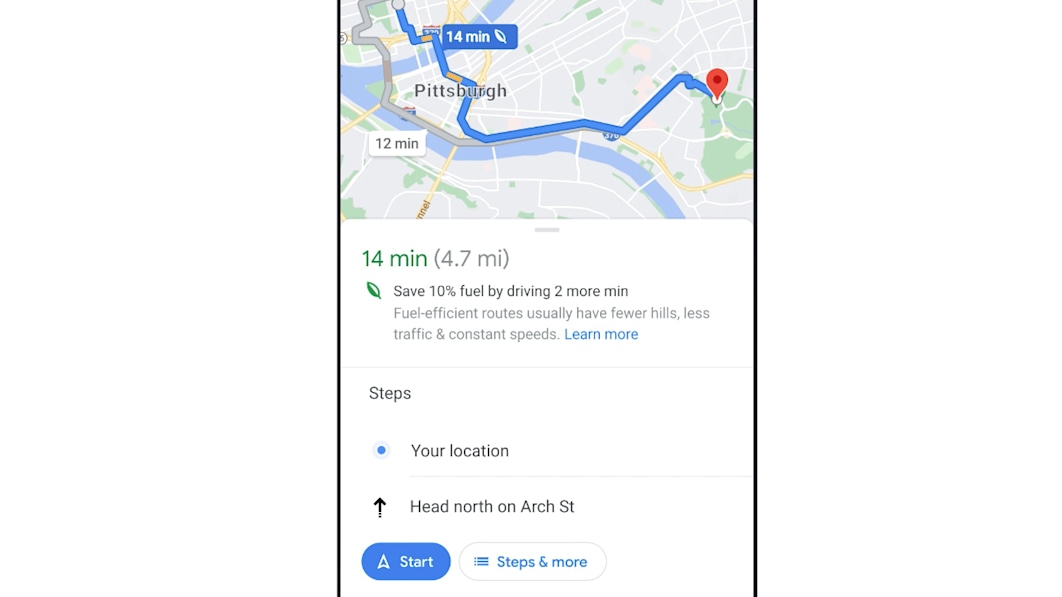Google Maps is rolling out a pretty significant feature update to its Android and iOS apps to give people an option to help reduce vehicle emissions. It’s called eco-friendly routing and although it was announced a few weeks ago, we’re just now starting to see it on our phones.
Essentially, Google Maps will suggest a route that reduces fuel consumption. It may be a little longer or take more time than the traditional “fastest” route, but the goal here is to save fuel. And in some cases, Google says, the fastest route will also be the most fuel-efficient route, so it will only share one option.
If multiple routes are shown, Google says it will show you the relative fuel economy (displayed as a percentage) and the ETA difference between the economical and fastest routes. You can then choose between the two – the eco route is marked with a green leaf to make sure you know which one it is. If you’d rather not see the eco-friendly route, you can disable the feature and Google will only show the fastest route.
Now you’re probably curious how Google sorts this out for every route imaginable. Google’s announcement says it uses both AI and “insights from the US Department of Energy’s National Renewable Energy Laboratory (NREL). Of course, we all know that different cars can be more fuel efficient in different scenarios. Hybrids excel in the city, and often the fuel consumption is lower on the highway. That’s the opposite of most gasoline-only cars that excel on the highway, but may be much worse in the city. This software would be extra good if you could adapt it to a specific car, but that might be a step too far for now.
If people actually use this new route, Google suggests it could prevent more than 1 million tons of CO2 emissions per year, or the equivalent of taking 200,000 cars off the road. That is certainly not nothing, but it also means that you may have to accept that you will arrive at your destination a few minutes later than is ultimately possible. Google presents it as a way to save money on gas, in addition to being an environmental resource, so maybe that’s enough to get people to go that eco route.
Related video:
